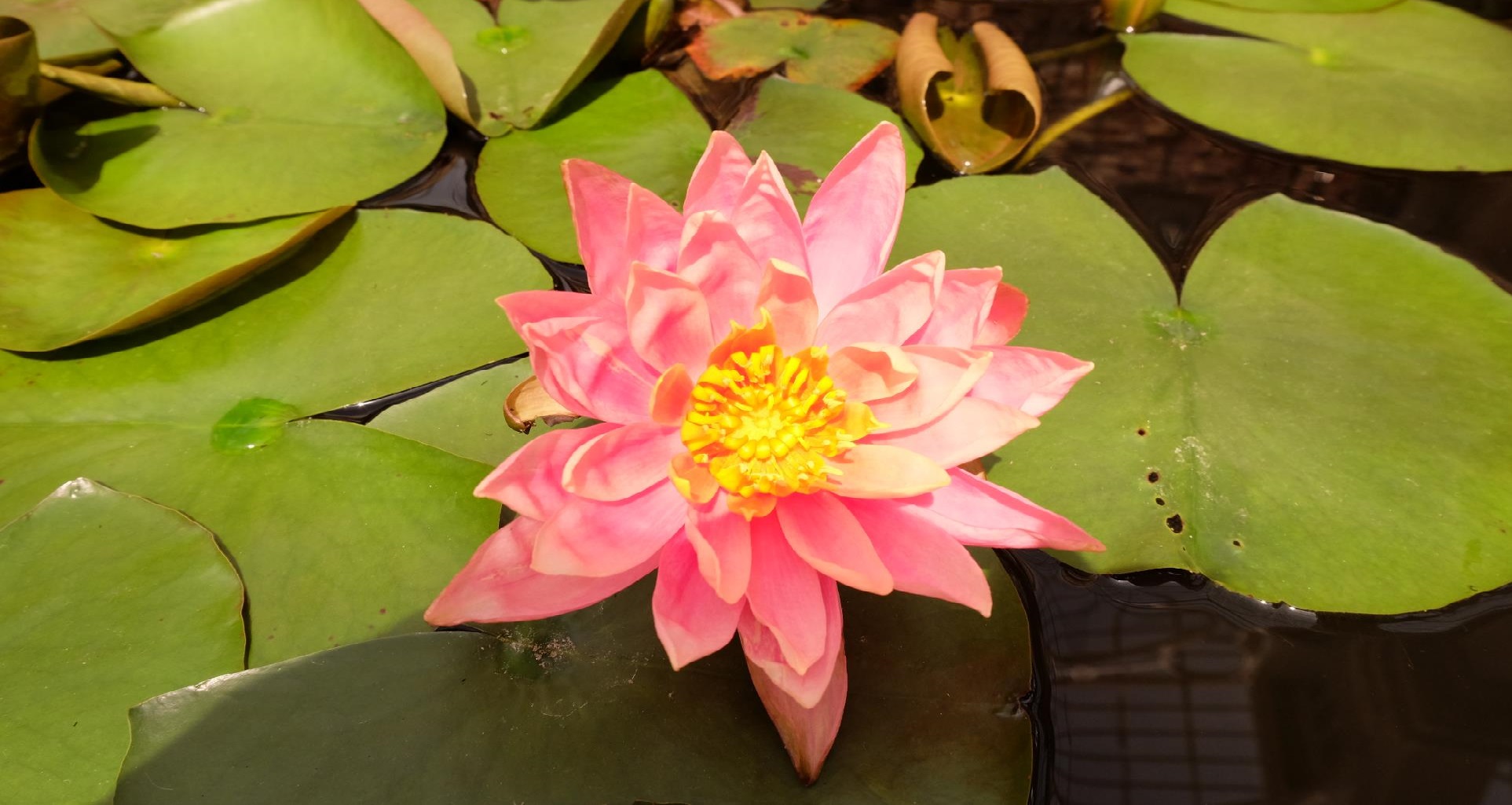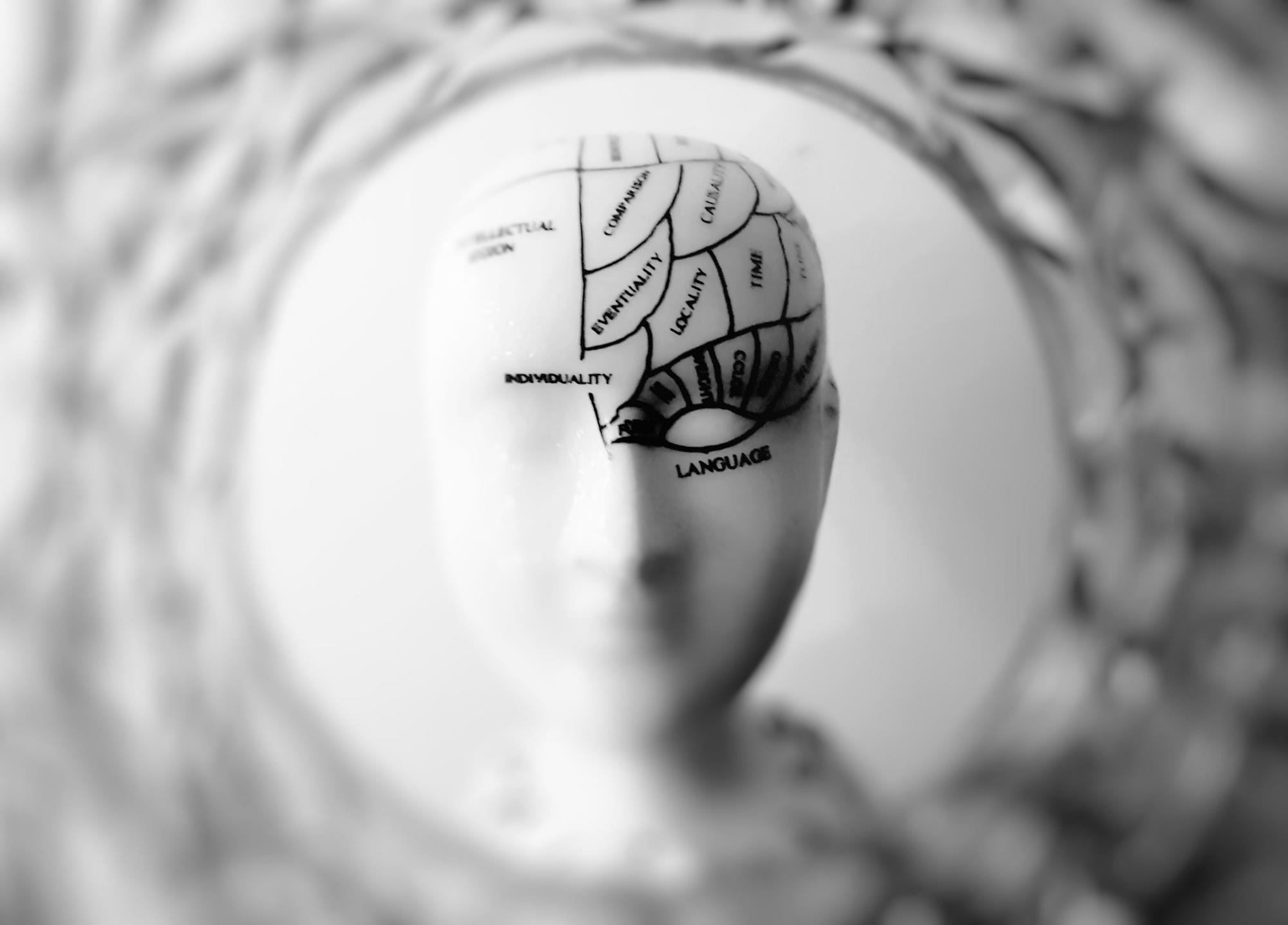1) Allow only certain periods of anxiety and observe its effect on you – It’s difficult to be effective or productive in your daily routines when anxiety and stress are dominating your thoughts and emotions. But what can you do to prevent it? If you’re like many chronically anxious thinkers, your anxiety may sometimes feel overwhelming. You may suffer from panic attacks, breathlessness and the belief that you are about to have a heart attack. You may have tried lots of things: avoiding the triggers for anxiety, distracting yourself, reasoning with your anxious thoughts, putting the lid on worries or trying to think positively, but nothing seems to work. Trying to stop anxious thoughts is clearly ineffective. Telling yourself to stop worrying doesn’t work. You may be able to consciously distract yourself or suppress anxious thoughts for awhile, but you can’t expel them forever. Often, trying to control anxiety only makes it worse. If you’re not sure, test this out for yourself. Close your eyes and imagine a balloon bursting next to your ear. Once you’re aware of the bursting balloon in your mind, it’s difficult to stop thinking about it. Whatever you do, for the next few minutes, be determined not to think about bursting balloons. So how did it go? Did the thoughts of bursting balloons disappear or keep popping into your head?
Attempts at “thought stopping” often backfire because each attempt forces you to pay extra careful attention to the thought you want to avoid. Because you have to prevent it, the very act of avoidance only emphasises it more. But that doesn’t mean there’s nothing you can do to control your anxiety. You just need a different approach. This is where the strategy of postponing anxiety comes in. Rather than trying to stop or get rid of an anxious thought, give yourself permission to create a “worry period”. Choose a set time and place for allowing anxiety to be triggered. It should be at the same time every day (e.g. in the office at 9 a.m.) and early enough that it won’t make you anxious during moments of relaxation or before you sleep. During your worry period, you’re permitted to worry about whatever’s on your mind. Observe your thoughts without prejudice or judegement. Do not avoid or fight against them. If anxious thoughts or emotions come into consciousness during the day, make a brief note of it and postpone it until your next worry period. Reassure yourself that you will have enough time to think about it later, so there’s no need to worry about it now. Save it for later and continue with your routine.
Later in the worry period, go over your “worry list” in your thoughts. Reflect on the concerns you wrote down during the day. If the thoughts still agitate you, allow yourself room to worry about them, but only for the specified time. Go through the list of anxious thoughts and sort them into a table with three categories: those with immediate solutions, those with long term solutions and those where there are no solutions. Then in wirting, prioritise the list of problems that have immediate solutions, write down a date for fixing the long-term problems and tear off the box where there are no solutions. make a mental note of doing this and carry out a ritual for throwing away the thoughts where there are no solutions. With practice the worries will slowly lose their significance and you can cut the ‘worry period’ short to enjoy the rest of your day. Postponing anxiety is effective because it breaks the cycle of dwelling on negative thoughts in the present moment. Yet there’s no struggle to suppress the thought or judge it. You simply save it for later. As you develop the ability to postpone your anxious thoughts, you’ll start to realiz you have more control over worrying than you think.
2) Create relaxation periods in the day – When stress hormones throw your nervous system out of balance, relaxation techniques can bring it back into a balance by producing a relief response, and a state of deep calm that is the polar opposite of anxiety. When stress overwhelms your nervous system your body is flooded with toxic chemicals that prepare you for “fight or flight”. While the stress response can be lifesaving in dangerous situations where you need to act quickly, it wears your body down when it is constantly activated in everyday life. Various techniques can be used to put the brakes on this heightened state of alert and bring your body and mind back into a state of equilibrium. Use the various download links above to create periods in the day when you can switch off, live in the present moment and enjoy a period of calm and relaxation. It will not make you weaker or less tuned in. But it will allow you to develop a strategy for letting go of the toxic chemicals and physical tensions that accompany anxiety and lead to ‘burn out’. Research proves that mindfulness is a way of conditioning thoughts and behaviours so that you can learn to switch off the triggers in your body that cause anxiety. There are some very simple procedures below that can help. Breathing techniques & interventions during a panic attack all help to dectivate the fight and flight response. The relief response is not about lying on a couch, but developing a mentally active process that leaves the body calm and focused. You need to achieve a state of relaxed concentration and this means learning the basics, but it does take practice and commitment. Most relaxation coaches recommend setting aside 10 to 15 minutes/day for relaxation (early morning and before bed). If you’d like to get even more stress relief, aim to use these techniques as an intervention when anxiety or stress is triggered. If that sounds unrealistic, remember how much anxiety saps you of energy, keeps you awake at night, or takes away from enjoying your life. Many of these techniques can be incorporated into your existing daily schedule – during lunch hour at work, at your desk, walking to work or in the park, or on the train during your morning commute to work. What works for you? There’s no particular relaxation technique that works perfectly for everyone. When choosing a relaxation technique, you need to consider your own needs, the time of the day, individual preferences and levels of fitness, as well as the way you react to stress. The right technique is the one that matches your lifestyle and is able to elicit relief or a sense of calm. You may find that alternating or combining techniques will keep you motivated to provide the best results.
How do you respond to anxiety? Do you become angry, stressed or on a heightened state of alert? You may respond best to relaxation techniques that quiet you down, such as mindfulness of breathing.
Do you become depressed, withdrawn or detached? You may respond best to relaxation techniques that are stimulating and energize your nervous system, such as rhythmic exercise
Do you freeze – speeding up internally, while slowing down externally?
Your challenge is to identify relaxation techniques that provide both safety and stimulation to help you “reboot” your system. Techniques such as mindfulness, walking or yoga might work well for you
Do you need time-out or social stimulation? If you crave solitude, relaxation techniques such as breathing, meditation or progressive muscle relaxation will give you the space to quieten your mind and recharge your body. If you crave social interaction, individual counselling or group support might help.
Do you become charged and energised? You made need to use exercise to release pent up stress and aggression, to activate the muscles, expel unwanted sensations and release a build up of toxins and hormones which keep the muscles tense.
1) Relaxation technique I: Breathing meditation for stress relief – Deep, cleansing breaths, are simple, yet powerful relaxation techniques; easy to learn, and to practice anywhere. Deep breathing using the full expansion and contraction of the diaphragm is the cornerstone of relaxation and can be combined massage, aromatherapy and music. The key to deep breathing is to breathe from the abdomen, getting as much fresh air as possible in your lungs through your nose and breathing out through the mouth. The more oxygen you get in your lungs, the less tense and anxious you feel. Sit comfortably with your back straight. Put one hand on your chest and the other on your stomach. Breathe in through your nose. Exhale through your mouth. Continue breathing, while finding your natural rhythm and count the breaths. Focus your entire attention on the sensation of your breath. This helps you slow down the heart-rate, by your controlling your breath. Whenever you notice anxious thoughts arise let them come and then turn your attention back to your breath.
2) Relaxation technique II: Progressive muscle relaxation for stress relief – Progressive muscle relaxation involves a two-step process in which you systematically tense and relax different muscle groups in the body. With regular practice, progressive muscle relaxation gives you an intimate familiarity with the sensations of tension and relaxation in different parts of the body. This self-awareness helps you monitor and counteract the triggers of muscular tension that accompanies anxiety. And as your body relaxes, so will your mind. You can combine deep breathing with progressive muscle relaxation for an additional level of stress relief. Practicing progressive muscle relaxation starts with the toes and feet and work its way up to the face. Move slowly up through your body, contracting and relaxing the muscle groups as you go. It takes practice at first, but try not to tense muscles other than those intended. This will develop a your sense of control.
3) Create periods of physical exertion and amplified activity – Rhythmic exercise – such as running, walking, rowing, dancing or cycling is the most effective form of activity that can relieve anxiety and stress when performed with relaxation techniques. As with meditation, mindfulness requires being fully engaged in the present moment, focusing your mind on how your body feels right now. As you exercise, focus on the physical sensations of your body’s movement and how your breathing complements or resonates with that movement. If your mind begins to wander to other negative thoughts, gently turn your attention back to your breath and bodily movement. If walking or running, focus on each step – the sensation of your feet touching the ground, the rhythm of your breath and feeling the elements in your face.
Reducing Stress and Anxiety
4) The Body Scan – noticing the physical/psychological triggers to anxiety – Build up an awareness of the triggers that cause anxiety, whether those are specific events, people, situations or a general sense of uncertainty. It is also important to keep a diary so that you can develop a sound awareness of the signals that cause anxious thought and feelings. Gradually, you will become more mindful and be able to step away from anxious triggers, prevent them getting a grip or even use interventions to prevent them from intensifying. Physical stressors are just as important as psychological stressors and can be dealt with earlier and more effectively with simple relaxation techniques. Pay more attention to low level stress such as the need for sleep, a build up of thirst and hunger, needing the toilet, sitting with eye strain, back pain or muscle tension at your desk. Close your eyes and imagine using a laser body scan to check your body for physical sensations or signs of stress and pain. Then listen to your body and the physical impulses to reliev that pain. Try to identify what actions you can take to relieve that pain e.g. eat & drink often, go to the toilet, stretch your muscles, rest your eyes, walk away from your desk, down tools, take a break, go to sleep, carry out a breathing technique. also keep a journal.
5) Test whether the problem has a solution – While you’re fixed in a period of anxiety, you may temporarily feel less anxious. Running over a problem in your head distracts you from your actual emotions and makes you feel like you’re in control. But worrying and problem solving are often two very different things. Problem solving involves evaluating a situation, coming up with concrete steps for dealing with it and putting them into action. Anxiety, on the other hand, causes confusion and rarely leads to solutions. No matter how much time you spend dwelling on something, you’re not going to be more prepared to deal with them should they actually happen. You must learn to distinguish between solvable and unsolvable concerns. If a negative thought pops into your head, start by asking yourself whether the problem is something you can actually solve. The following questions can help: Is the problem something you’re facing now, rather than an imaginary? If the problem is imaginary, how likely is it to happen? Is it realistic? Can you do something about the problem or is it out of your control? Solutions to your problems are those thoughts you can take action on immediately (such as changing a light bulb). Unproductive thoughts which lead to anxiety are those for which there is no corresponding immediate action (“What if I have a heart attack?). If you can solve the problem, start preparing. Make a list of possible solutions and focus on the things you have the power to change, rather than those beyond your control. After you’ve assessed your options, plan and take action. You’ll feel much more worried if you allow it to remain unresolved. If you’re a chronic worrier, the vast majority of your anxious thoughts are probably about this kind of uncertainty. It’s important to retune into your emotions. While you’re worrying, your feelings are temporarily suppressed, but as soon as you stop the tension and anxiety recurs. And then, you start worrying about your feelings. The only way out of this vicious cycle is to embrace your feelings of anxiety, let them well up and tell yourself they will soon pass. This may seem scary at first but the truth is all emotions are valid. They don’t always make sense and are not always pleasant. But if you can accept your feelings as part of you, you’ll can experience them without becoming overwhelmed.
6) The Mind Scan – Begin to challenge anxious thoughts – If you suffer from chronic anxiety, chances are you look at the world in ways that make it seem more dangerous. This is called selective thinking: e.g. you overestimate the possibility that things will turn out badly, leap to worst-case scenarios, or treat negative thoughts as fact. You also diminish you ability to cope, assume you’re weak and will collapse. These negative automatic thoughts are called ‘distorted thinking’. Although they aren’t based on reality, they’re not easy to give up. They are so habitual, conditioned and embedded you’re not even aware of them. To break this cycle of anxiety, you must retrain your brain. Start by identifying the anxious trigger, then the negative thought. Next, instead of viewing your thoughts as fact, treat them as hypotheses you’re testing out. Begin to challenge these thoughts with alternative evidence and develop a more balanced perspective. Distorted thinking that intensifies anxiety:
All-or-nothing thinking – Looking at things in black-or-white categories, with no middle ground (“If I fall short of perfection, I’m a total failure.”)
Overgeneralization – generalizing from a single negative experience, using it as universal evidence (I was shouted at; I will always get attacked)
Selective thinking – selecting on the negatives while filtering out all the positives. Noticing what went wrong, rather than what went right.
Diminishing positives – when positive events don’t matter (“I passed all my exams, but; but I failed my driving test.”)
Jumping to conclusions without evidence – you act like a mind reader (I know his eyes show disapproval) predicting the future
Catastrophizing – expecting the worst-case scenario (e.g. the car will crash)
‘Shoulds’ and ‘should-nots’- having a strict code of what you should and shouldn’t do
Personalization – assuming responsibility for things that are outside your control
7) Become more aware of how others affect you in relationships – How you feel is affected by your relationships with others and sometimes you will attract the company of other worriers or anxious people, whether you’re aware of it or not. Studies show that emotions are contagious. We often resonate with the moods of others at a non-verbal level. The people you spend a lot of time with will have an even greater impact on your mental state. You may not be aware of how people or situations are affecting you. Maybe this is the dynamic in your family, or you’ve developed unconscious patterns of behaving because they have become habituated. Start a diary. Every time you feel anxious, jot down the thought and what triggered it. Over time, you’ll start to see patterns. Spend less time with people who make you anxious. Is there someone in your life who drags you down or always seems to leave you feeling anxious, angry or sad? Spend less time with that person or establish healthier boundaries. For example, you might set certain topics off-limits, if you know that talking about them with that person makes you anxious. Do not tell-all to everyone, but choose your confidantes carefully. Use your instincts when deciding who to confide in. Some people will help you gain perspective, while others will feed off your doubt and fears.
8) Developing everyday mindfulness – Anxiety is a type of fear which is usually focused on the future – on what might happen and what you think you’ll do about it. In contrast to the previous technique of challenging anxious thoughts, this strategy is based on observing and then letting go. Together, they can help you identify where your thinking is causing problems, while helping you get in touch with your emotions. Acknowledge and observe your anxious thoughts and feelings. Do not try to ignore them, put up a fight, or control them. Instead, simply observe them as if from an outsider’s perspective, without reacting or judging. Let your worries go. Notice that when you don’t try to control them, they rise and burst like bubbles in a pond. It’s only when you engage your worries that you get entangled in them. Stay focused on the present. Pay attention to the way your bodily sensations, the rhythm of your breathing, your heart-rate, your ever-changing emotions and the thoughts that drift into your mind. If you find yourself getting entangled, turn your attention to the present moment. Using mindfulness takes practice. At first, you’ll probably find your mind wanders back to anxious thoughts. Try not to get frustrated. Each time you draw your focus back to the present, you’re reinforcing a new mental habit to break a cycle of anxiety.
9) Begin to accept uncertainty – The difficulty in being able to tolerate uncertainty plays a big part in anxiety. Chronic anxiety cannot tolerate doubt or unpredictability. People with anxiety need to know with certainty what’s going to happen next, but this is impossible. Anxious thinking may seem a way to predict the future or away to prevent unexpected outcomes. The problem is; it never works. Thinking about things that could go wrong all the time doesn’t make the world any more predictable. You may feel safe while you’re worrying, but it’s just fantasy. Focusing on worst-case scenarios won’t keep bad things from happening. It will only keep you from enjoying the good things you have in the present. So if you want to stop worrying, start by accepting your need for immediate answers is unrealistic. Challenging intolerance of uncertainty is the key to anxiety relief. Ask yourself the following questions and write down the responses. Is it possible to be certain about everything? Is needing certainty helpful or unhelpful? Do you predict bad things will happen if things are uncertain? Is it possible to live with the chance something negative may happen?
10) Enjoying Simple Pleasures – being in the moment – Try to focus on regular moments during the day where you simply allow yourself to dwell on simple pleasures – walking in the park, gardening, watching a sunset, listening to natural sounds, window gazing, cooking, receiving a massage, taking a shower, a sauna or swimming.



